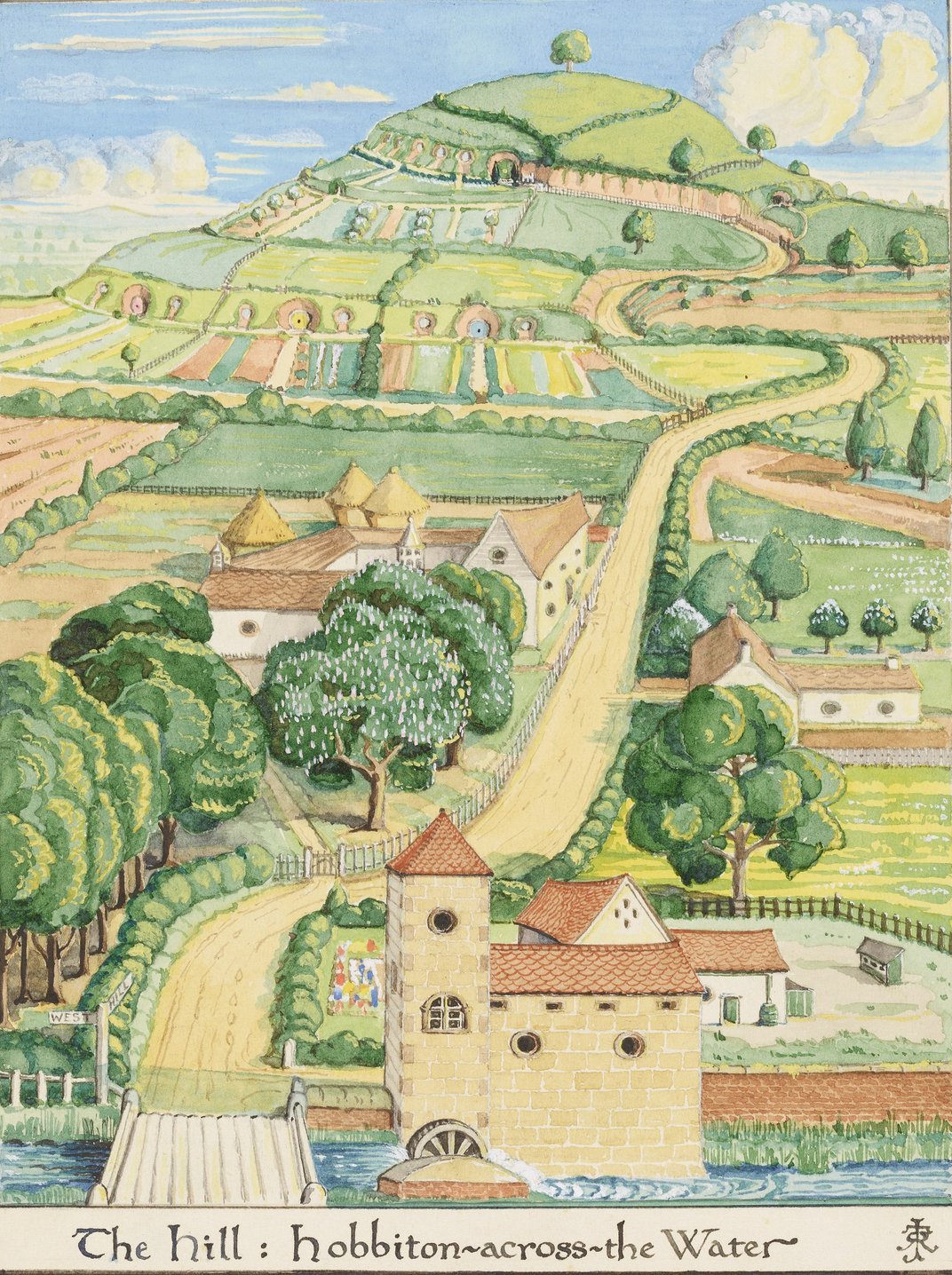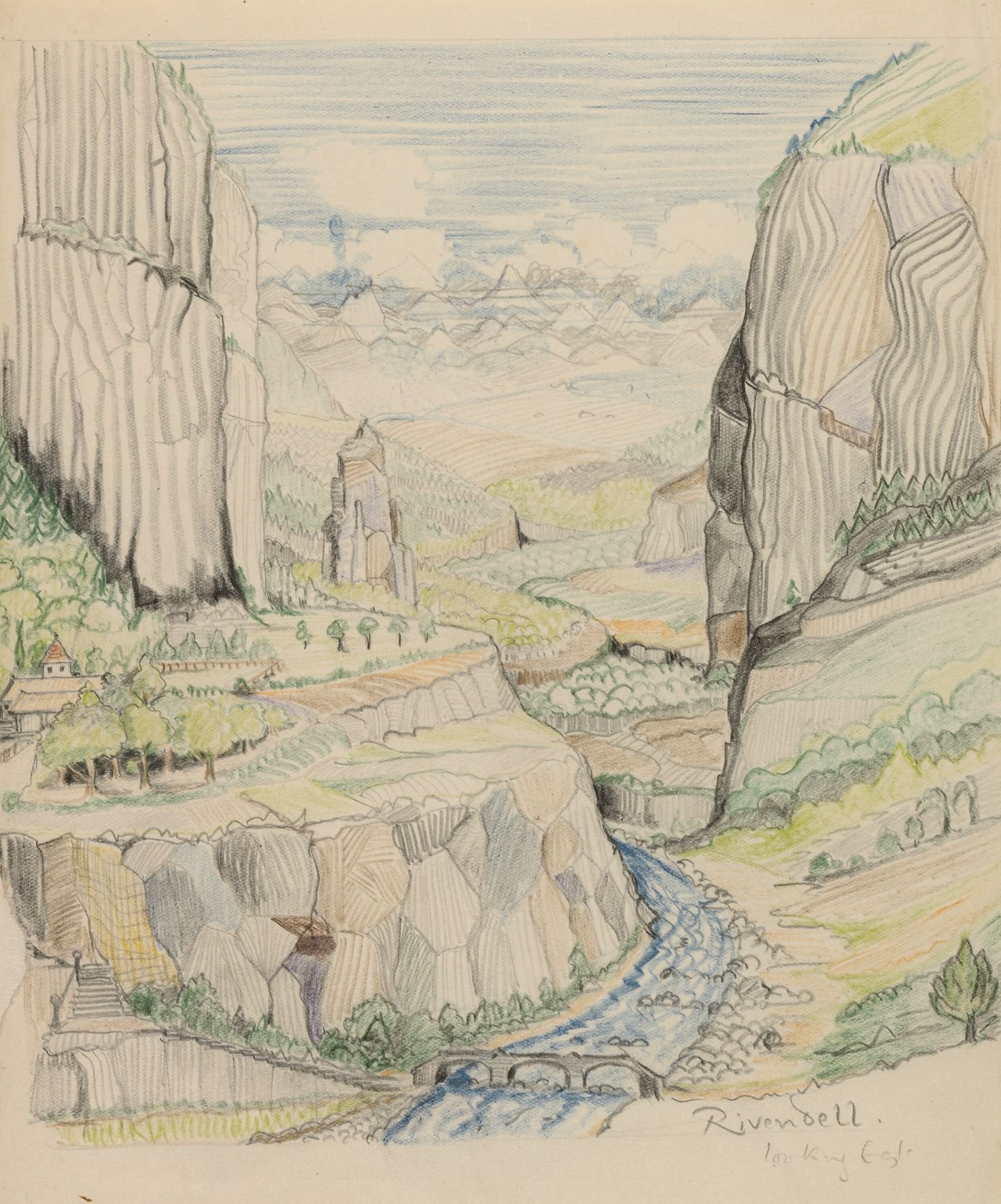To create his fictional world of Middle-Earth, English author J.R.R. Tolkien used nearly every creative tool at man’s disposal, be it calligraphy, cartography, prose, poetry, or painting.
To grease the gears of his mind so as to churn out the endless layering and details typical of the novels and appendixes, Tolkien often turned to ink and graphite, and many of his sketches and paintings are available to view on the recently-updated section on the Tolkien Estate website.
Enduring audience members can also enjoy images and paintings done outside of his work on Middle-Earth, as well as audio clips and other documents related to his personal life and efforts as a mapmaker, calligrapher, and artist.
Debuting on February 26th, the date at the beginning of the second book of The Lord of the Rings at which the Fellowship of the Ring was broken after the death of Boromir, the new website also includes paintings done for his four children, for whom the stories which became The Hobbit and Lord of the Rings were first made.
Further illustrations were included from his work on The Silmarillion, which very much like the book, take on a much-deeper element of myth, with wild colors blending with scenery that melds into an image in the background as if from a half-remembered dream.
The new audio section is also particularly striking. “Tolkien was first introduced to a tape-recorder by his friend George Sayer in 1952,” the estate details. “He was so impressed with the sound quality that he sat down and read out passages from his manuscript of The Lord of the Rings”.





Correction: The new online Tolkien collection does not contain "all" of his maps and paintings. Rather, it is a representative collection. I’d estimate somewhere around half of what has been published (in various sources) previously.